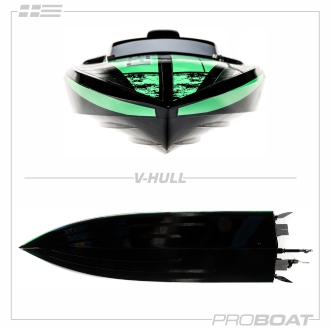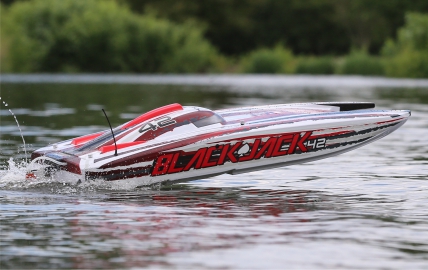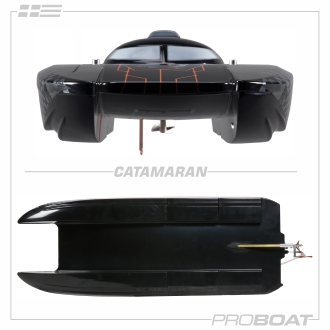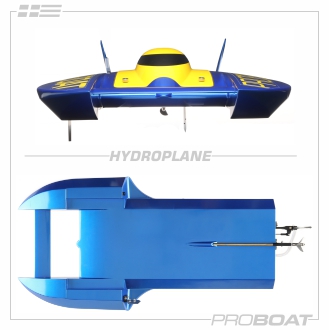
RC V-HULLS (Moderate to drive / Turn in both directions)
The bow-to-stern wedge shape of a V boat hull knifes cleanly through waves rather than pounding, to deliver the smoothest ride in rough water. The better riding qualities are offset by added draft and less stability. Because it has more drag than a flat-bottom, the V-hull also requires more power to reach the same speed. Shop all of Pro Boat’s RC V-Hulls here.



